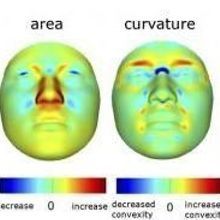Craniofacial

A Protein-Sensing Molecular Switch Alters Facial Features
Shelby Bradford, PhD | Jun 24, 2024 | 3 min read
The mTORC1 signaling pathway senses nutritional information and influences craniofacial development in mice.

Illuminating Craniofacial Development
Hannah Thomasy, PhD | Jan 1, 2024 | 2 min read
Paul Trainor delves into the genetic and environmental factors that shape the head and face.

Image of the Day: Cichlid Cranium
Nicoletta Lanese | Jul 25, 2019 | 1 min read
Maternal care for the fish alters the structure of their developing heads.

Image of the Day: See Through
Catherine Offord | Nov 6, 2018 | 1 min read
A zebrafish model of the birth defect craniosynostosis provides insights into how the condition develops.

The Rising Research Profile of 23andMe
Catherine Offord | Nov 30, 2017 | 7 min read
An exploration of the genetics of earlobe attachment is just the latest collaborative research project to come out of the personal genetic testing company.

DNA Mugshots
Rina Shaikh-Lesko | Mar 24, 2014 | 1 min read
Variants of 20 genes can predict the shape of a person’s face, a study finds.

About Face
Abby Olena, PhD | Oct 25, 2013 | 2 min read
Researchers show that genetic enhancer elements likely contribute to face shape in mice.
